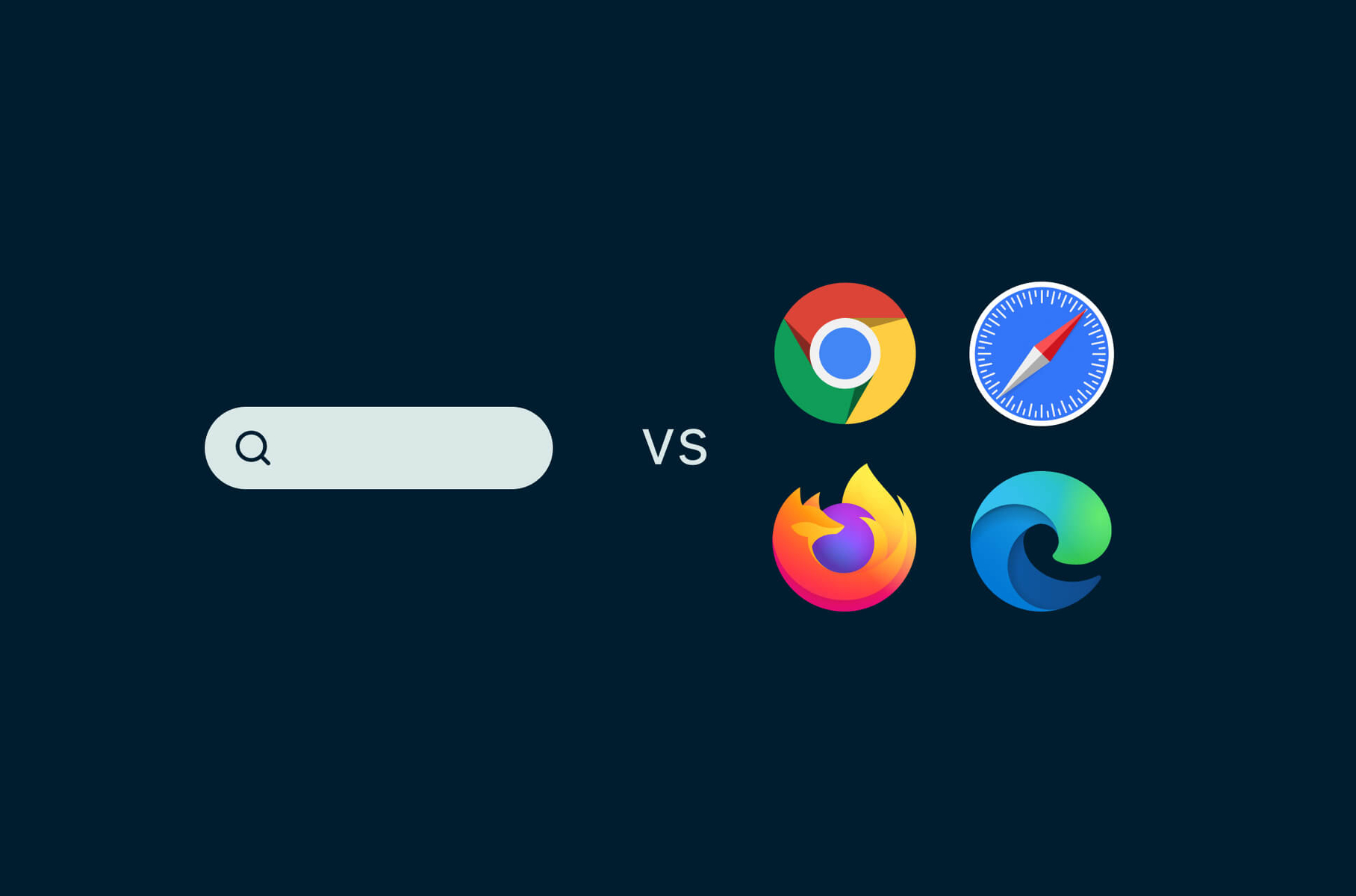Introduction
A web browser is an essential tool for accessing and navigating the vast world of the internet. It allows users to view websites, browse web pages, and interact with online content. In today’s digital age, where the internet is an integral part of our daily lives, understanding web browsers and their functionalities is crucial.
Web browsers serve as a medium between users and the internet, acting as a gateway to explore and communicate with online resources. They retrieve and display web pages, interpret HTML code, and render various types of content, such as text, images, videos, and interactive elements. Without a web browser, accessing websites and engaging with online content would be nearly impossible.
The primary purpose of a web browser is to simplify the user’s interaction with the internet. It provides an intuitive graphical interface that allows users to navigate through websites using hyperlinks, bookmarks, and search functions. Web browsers also support features like tabbed browsing, allowing users to open multiple web pages in separate tabs for easier multitasking.
Over the years, web browsers have evolved to become more sophisticated and feature-rich. They have incorporated advanced functionalities, such as support for extensions and plugins, enhanced security features, and improved rendering engines. With each new version, web browsers strive to deliver a faster, more secure, and optimized browsing experience.
Having a basic understanding of web browsers is essential for both casual internet users and professionals alike. Web developers, for instance, need to understand how different browsers interpret HTML, CSS, and JavaScript code to ensure that their websites are compatible and display correctly across multiple browser platforms.
In this article, we will explore the definition and purpose of web browsers, their evolution over time, key features that differentiate them, popular web browsers in use today, how they work, considerations for mobile web browsers, and important security and privacy considerations when using web browsers. We will also provide useful tips for choosing and utilizing web browsers effectively. So, let’s dive in and unravel the fascinating world of web browsers!
Definition and Purpose of a Web Browser
A web browser is a software application that allows users to access and view web pages on the internet. It acts as an intermediary between the user and the World Wide Web, providing a user-friendly interface for navigating online content.
The primary purpose of a web browser is to retrieve information from web servers and display it to the user. When a user enters a web address or clicks on a hyperlink, the browser requests the corresponding web page from the server and renders it on the user’s screen. The browser then interprets the website’s HTML, CSS, and JavaScript code to display text, images, videos, and other multimedia elements in a visually appealing manner.
Web browsers also enable users to interact with web pages through various features and functionalities. For example, users can fill out online forms, submit data, perform searches, bookmark web pages for future reference, and save passwords for automatic login. Additionally, web browsers support essential tasks such as downloading files, printing web pages, and managing browser settings.
Another important purpose of web browsers is to enhance the user’s browsing experience. They provide options for customizing the look and feel of the browser, such as choosing different themes or installing extensions and plugins to add new features and capabilities. Web browsers also implement security measures to protect users from malicious websites and online threats.
Web browsers have evolved significantly since their inception. Early web browsers like Mosaic, Netscape Navigator, and Internet Explorer laid the foundation for modern browsers by introducing features such as inline images, bookmarks, and support for tables and forms. Today, popular web browsers like Google Chrome, Mozilla Firefox, Microsoft Edge, and Apple Safari offer a wide range of powerful features and capabilities to cater to the diverse needs of internet users.
In summary, a web browser is a software application that allows users to access and view web pages on the internet. Its primary purpose is to retrieve and render web content, enable user interactions, and enhance the browsing experience. With the rapid evolution of web technologies, web browsers continue to evolve to provide a seamless and efficient way to explore and interact with the vast array of online resources.
Evolution of Web Browsers
The evolution of web browsers is a testament to the rapid advancement of technology and the ever-growing demands of internet users. From their humble beginnings to the feature-rich browsers we use today, let’s trace the journey of web browsers through time.
The birth of web browsers can be traced back to the early 1990s when Tim Berners-Lee introduced the World Wide Web. The first web browser, called WorldWideWeb, was developed by Berners-Lee himself and allowed users to view web pages containing text and simple graphics. However, it was limited to the NeXTSTEP operating system and had a basic user interface.
Soon after, the Mosaic web browser was released in 1993, which was instrumental in popularizing the World Wide Web. Mosaic introduced significant advancements such as inline images, clickable hyperlinks, and the ability to display formatted text. It became the foundation for future web browsers and served as a catalyst for the internet’s exponential growth.
In 1994, Netscape Navigator revolutionized web browsing by introducing features like bookmarks, forms, and tables. It quickly dominated the browser market, becoming the most popular browser of that time. Netscape Navigator’s success paved the way for the browser wars of the late 1990s, as Microsoft entered the scene with Internet Explorer.
During the browser wars, Internet Explorer and Netscape Navigator fiercely competed for market dominance. Both browsers rapidly improved their features and capabilities, leading to significant innovations such as JavaScript support, frames, and advanced rendering engines.
With the decline of Netscape Navigator, Internet Explorer became the dominant browser in the early 2000s. However, its market monopoly led to stagnation in browser development, resulting in a subpar browsing experience for users.
In 2004, Mozilla Firefox was introduced as an open-source alternative to Internet Explorer. Firefox brought innovative features like tabbed browsing, pop-up blocking, and an extensible architecture through its support for extensions. It quickly gained popularity and provided a significant push for web standards compliance and browser innovation.
Google Chrome, launched in 2008, took the web browsing experience to new heights. It introduced a minimalist user interface, a lightning-fast rendering engine, and robust security features. Chrome’s success inspired other browser vendors to improve their offerings, resulting in continuous advancements in web browser technology.
Today, web browsers like Google Chrome, Mozilla Firefox, Microsoft Edge, and Apple Safari offer a wide range of features, including automatic updates, developer tools, syncing across devices, and seamless integration with other online services.
The evolution of web browsers has been instrumental in enabling the incredible growth and accessibility of the internet. As technology continues to advance, we can expect browsers to keep evolving to meet the ever-changing needs of internet users and provide a seamless browsing experience.
Key Features of Web Browsers
Web browsers have evolved to offer a wide range of features and functionalities to enhance the user’s browsing experience. Let’s explore some of the key features that make modern web browsers indispensable tools for accessing and interacting with the internet.
- Tabbed Browsing: Tabbed browsing allows users to open multiple web pages within a single browser window, each appearing as a separate tab. This feature makes multitasking easier, as users can switch between different tabs without cluttering their desktop with multiple browser windows.
- Bookmarks and Favorites: Bookmarks and favorites allow users to save the URLs of their favorite websites for quick and easy access. Users can organize their bookmarks into folders, edit their titles, and even sync them across devices to have their favorite websites readily available wherever they go.
- Search Functionality: Integrated search functionality is a staple feature in modern web browsers, enabling users to search the web directly from the browser’s address bar. Users can type in a query, and the browser will display search results from the selected search engine, eliminating the need to visit a separate search engine website.
- Privacy and Security: Web browsers implement various privacy and security features to protect users’ online activities and personal information. This includes features such as private browsing mode, which doesn’t store browsing history or cookies, phishing and malware protection, and warnings for insecure websites.
- Extensions and Add-ons: Most popular web browsers support extensions and add-ons, which are additional software components that enhance the browser’s functionality. These can range from ad blockers and password managers to language translators and productivity tools, allowing users to customize their browsing experience according to their preferences.
- Auto-Fill and Password Management: Web browsers often offer auto-fill functionality, wherein they remember and automatically fill in frequently used forms, such as billing information, shipping addresses, and login credentials for websites. They may also provide secure password management to generate and store strong passwords for different websites.
- Developer Tools: For web developers and designers, web browsers provide built-in developer tools that aid in inspecting and debugging web pages. These tools allow developers to examine and modify website code, analyze network traffic, test responsiveness, and diagnose and fix issues.
- Customization Options: Web browsers often offer customization options to personalize the user interface. This includes choosing themes, fonts, and layouts, as well as options to customize the start page, home page, and new tab page.
These are just a few of the many features that web browsers provide to enhance the user’s browsing experience. With each new version and release, web browsers continue to add new features and improve existing ones, ensuring that users have a seamless and efficient browsing experience.
Popular Web Browsers
There are several popular web browsers available today, each with its own unique features, performance, and user base. Let’s take a closer look at some of the most widely used web browsers in the world.
- Google Chrome: Google Chrome is one of the most popular web browsers, known for its speed, stability, and extensive feature set. It offers a clean and minimalist user interface, automatic updates, excellent security features, and seamless integration with Google’s suite of services. Chrome also supports a vast library of extensions and add-ons to further enhance its functionality.
- Mozilla Firefox: Mozilla Firefox is an open-source web browser that focuses on privacy, security, and customization. It offers robust privacy features, strict tracking protection, and frequent updates to ensure a secure browsing experience. Firefox also provides a wealth of add-ons and themes, allowing users to tailor their browsing experience according to their preferences.
- Microsoft Edge: Previously Internet Explorer, Microsoft Edge is now a modern and highly capable web browser. It boasts a streamlined user interface, fast performance, and seamless integration with other Microsoft products and services. Edge also includes features like built-in Microsoft Defender SmartScreen for protection against malicious websites and smooth integration with Windows 10 features.
- Apple Safari: Apple Safari is the default web browser for Apple devices, offering a sleek and user-friendly experience. It is known for its efficiency, energy-saving features, and seamless synchronization across Apple devices. Safari also prioritizes user privacy and security, providing features like Intelligent Tracking Prevention and a strong focus on compatibility with web standards.
- Opera: Opera is a lesser-known but highly capable web browser that offers a range of unique features. It includes a built-in ad blocker, free VPN, and integrated messenger services. Opera’s user interface is customizable, and it supports a wide range of extensions.
While these are some of the most widely used web browsers, it’s important to note that there are additional browsers available, each catering to specific needs and preferences. Users may have different priorities when it comes to features, privacy, performance, or compatibility, so it’s worthwhile to explore various browsers and find the one that best aligns with their requirements.
How Web Browsers Work
Web browsers work behind the scenes to retrieve and display web pages, allowing users to interact with online content. Understanding the basic workings of a web browser can provide valuable insights into how we access and navigate the vast landscape of the internet.
Here is a simplified breakdown of the fundamental steps involved in how web browsers work:
- URL Parsing: When a user enters a web address or clicks on a hyperlink, the browser parses the Uniform Resource Locator (URL) to identify the website’s domain name, protocol, and path.
- Requesting the Web Page: The browser sends an HTTP (or HTTPS) request to the web server hosting the website, specifying the desired web page. The request includes information such as the browser type and version.
- Receiving the Web Page: The web server processes the request and sends back the requested web page, typically in the form of HTML, along with additional files, such as CSS stylesheets and JavaScript scripts.
- Rendering the Web Page: The browser’s rendering engine interprets the HTML code and constructs a Document Object Model (DOM) representing the web page’s structure. It then applies the CSS styles to the appropriate elements, resulting in the visual appearance of the page.
- Fetching Additional Resources: The browser continues to fetch additional resources referenced within the web page, such as images, videos, and external scripts. This process may involve multiple server requests and parallel downloads to optimize performance.
- Executing JavaScript: If the web page contains JavaScript code, the browser’s JavaScript engine executes the code and enables interactivity on the page. This can include handling user inputs, making AJAX requests, and modifying page content dynamically.
- Displaying the Web Page: As the web page finishes rendering and all resources are loaded, the browser displays the final result on the user’s screen. This includes the rendered text, images, videos, and other multimedia elements.
- Handling User Interactions: The browser listens for user interactions, such as clicking on links, submitting forms, or scrolling through the page. When an interaction occurs, the browser triggers the corresponding actions, such as navigating to a new web page or performing an action on the current page.
Web browsers work tirelessly behind the scenes to make the entire process seamless for users, ensuring that web pages are delivered quickly, rendered accurately, and presented in a visually appealing manner. The complex interplay between the various components of a web browser enables us to browse the internet efficiently and interact with online content effortlessly.
Differences between Web Browsers
While all web browsers share the common goal of providing access to the internet, there are notable differences between them in terms of features, performance, compatibility, and user experience. Understanding these differences can help users choose a web browser that best meets their needs. Here are some key distinctions between web browsers:
- User Interface: Web browsers have different user interfaces and layouts, which may appeal to different users based on their preferences and familiarity. Some browsers prioritize minimalism and simplicity, while others offer more customization options and advanced features.
- Performance: The performance of a web browser can vary in terms of speed, responsiveness, and resource usage. Factors such as rendering engine efficiency, JavaScript execution speed, and memory management contribute to a browser’s overall performance.
- Compatibility: Web browsers may have varying degrees of compatibility with web standards and technologies. Some browsers may better support HTML, CSS, and JavaScript features, ensuring web pages render consistently across different sites. Others may have more robust support for emerging web technologies.
- Extensions and Add-ons: Browsers differ in their support for extensions and add-ons. While most modern browsers offer a range of extensions to enhance functionality, the availability and variety of extensions may vary. Users who rely heavily on specific extensions should consider browser compatibility.
- Privacy and Security: Web browsers have varying approaches to privacy and security features. Some prioritize user privacy and offer built-in features like ad blockers, tracking prevention, and secure password management. Others may focus on robust security measures, providing regular updates and prompt vulnerability patching.
- Operating System Compatibility: Certain web browsers are designed specifically for certain operating systems. While many browsers are cross-platform and work on multiple operating systems, some browsers may offer more seamless integration with specific platforms or have additional features exclusive to certain operating systems.
- Mobile Experience: Browsers differ in their mobile user experience. Some browsers offer specialized versions or dedicated mobile apps that are optimized for smaller screens and touch interactions. Mobile browsers may also utilize data-saving techniques or offer unique features tailored to mobile browsing.
- Developer Tools: For web developers, the availability and capabilities of developer tools can differ between browsers. The built-in developer tools provided by each browser can vary in terms of features, usability, and debugging capabilities.
It’s essential to consider these differences when choosing a web browser, as they can impact the overall browsing experience and compatibility with websites and online services.
Ultimately, the right web browser for an individual depends on their unique needs, personal preferences, and the platforms they use. It’s also worth noting that users can have multiple browsers installed simultaneously to take advantage of different features or address specific requirements.
Mobile Web Browsers
In today’s mobile-centric world, having a reliable and user-friendly web browser on your mobile device is essential for accessing the internet on the go. Mobile web browsers are specifically designed to provide a seamless browsing experience on smartphones and tablets. Let’s explore the unique features and considerations of mobile web browsers.
Optimized Interface: Mobile web browsers offer a streamlined and optimized user interface, specifically tailored for smaller screens and touch interactions. The interface usually incorporates features like simplified navigation, easily accessible controls, and quick access to bookmarks or saved pages.
Syncing Across Devices: Many mobile browsers offer syncing capabilities, allowing users to sync their browsing history, bookmarks, and open tabs across multiple devices. This ensures a seamless experience when transitioning from mobile to desktop or other devices.
Offline Reading: Mobile browsers often include offline reading modes, which allow users to save web pages to their device and read them later without an internet connection. This can be especially useful when traveling or in areas with limited or no network coverage.
Gestures and Touch Controls: Mobile browsers take advantage of touch-sensitive screens by incorporating gestures and touch controls for easier navigation. Common gestures include swiping to switch between tabs or pages, pinching to zoom in or out, and long-pressing to access additional options.
Data-saving Features: Mobile browsers often provide data-saving features to minimize bandwidth usage and load pages faster. Techniques such as compressing images and blocking ads can help reduce data consumption, making it ideal for users with limited mobile data plans.
Integration with Mobile Services: Mobile browsers can integrate with various mobile services and applications present on the device. For example, they may support sharing web content directly to social media platforms, messaging apps, or file storage services.
Security and Privacy: Mobile browsers prioritize security and privacy on mobile devices. They employ measures such as built-in ad blockers, anti-tracking features, and options for private browsing, aiming to protect users’ personal information and provide a safe browsing experience.
Platform-Specific Browsers: Some mobile devices, such as iPhones and iPads, come with default browsers specific to their respective operating systems, such as Safari on iOS. These browsers often have deep integration with the platform’s features and provide a seamless user experience.
Third-Party Mobile Browsers: In addition to default browsers, various third-party options are available for mobile devices. Third-party mobile browsers offer unique features, customization options, and different user interfaces, providing users with a broader choice to find a browser that best suits their needs.
With the rapid growth of mobile internet usage, having a reliable and feature-rich mobile web browser is crucial. Whether it’s for casual browsing, productivity on the go, or seamless integration with mobile services, mobile web browsers provide a gateway to the vast world of online content on your handheld device.
Security and Privacy Considerations
When it comes to web browsing, security and privacy are of paramount importance. With the increasing prevalence of cyber threats, it is crucial to understand the security and privacy considerations associated with using web browsers. Let’s explore some key factors to consider:
Secure Connection (HTTPS): Ensure that your web browser supports secure connections using HTTPS (Hypertext Transfer Protocol Secure). Look for the padlock icon in the address bar, indicating that the website you are visiting is encrypted and that your data is transmitted securely.
Phishing and Malware Protection: Look for web browsers that offer built-in protection against phishing attempts and malware. These browsers typically provide warnings or block access to websites known to be malicious or suspicious, helping to safeguard your personal information and device.
Privacy Settings: Consider the privacy settings available in your web browser. Look for options to control the collection and sharing of your browsing data, such as disabling third-party cookies, managing website permissions, and opting out of personalized advertisements.
Incognito/Private Browsing Mode: Make use of the private browsing mode offered by your web browser. This mode does not store your browsing history, cookies, or other data, providing a more private browsing experience. Keep in mind that while private mode prevents data from being stored locally, it does not offer complete anonymity.
Update Frequency: Regularly update your web browser to ensure you have the latest security patches and bug fixes. Web browser updates often address vulnerabilities and improve security measures, so staying up to date is crucial for protecting against potential threats.
Ad Blocking: Consider using ad-blocking extensions or features available in web browsers to reduce the risk of malicious ads or unwanted tracking. Ad blockers can enhance your browsing experience by minimizing distractions and potentially lowering the risk of exposure to malicious content.
Password Management: Web browsers often offer password management features, allowing you to securely store and autofill passwords for different websites. Ensure that you use strong, unique passwords and take advantage of these features to enhance your online security.
Privacy-Focused Browsers: Consider using web browsers specifically designed with a focus on privacy. These browsers may offer additional privacy features, such as advanced tracker blocking, anti-fingerprinting techniques, and increased control over your data.
Security Auditing: Stay informed about the security practices of different web browsers. Pay attention to security audits, vulnerability reports, and the browser vendor’s responsiveness to security concerns. Opt for web browsers that have a solid track record of addressing security vulnerabilities proactively.
Remember, while web browsers play a crucial role in protecting your online security and privacy, it is also essential to practice safe browsing habits. Be cautious when visiting unfamiliar websites, avoid clicking on suspicious links, and regularly review your browser and device settings to ensure your online safety.
Tips for Choosing and Using Web Browsers
When it comes to choosing and using web browsers, there are several factors to consider to ensure a secure and optimal browsing experience. Here are some helpful tips to guide you:
- Evaluate Security and Privacy Features: Prioritize web browsers that offer robust security and privacy features, such as encryption, phishing protection, and options to control data collection. Look for browsers with a strong track record in addressing vulnerabilities and actively maintaining security updates.
- Consider Compatibility: Choose a web browser that is compatible with your operating system and devices. Ensure that the browser provides a seamless experience across different platforms, including desktop, mobile, or tablet.
- Assess Speed and Performance: Look for web browsers that offer fast loading times, efficient memory usage, and smooth browsing performance. Consider the browser’s JavaScript execution speed, rendering capabilities, and overall responsiveness.
- Explore Customization Options: Consider browsers that provide customization options to personalize your browsing experience. Features like customizable themes, user interface layouts, and extensions/add-ons can enhance productivity and tailor the browser to your preferences.
- Check Developer Support: If you are a web developer, choose a browser with robust developer tools and good developer support. Features like page inspection, debugging tools, and performance analysis can greatly aid in web development and debugging processes.
- Stay Updated: Keep your web browser up to date to ensure you have the latest security patches and improvements. Regular updates often provide enhanced features, bug fixes, and increased protection against cyber threats.
- Use Strong and Unique Passwords: Utilize the built-in password management features of web browsers or consider using a dedicated password manager. Ensure that your passwords are strong, unique, and regularly updated to enhance your online security.
- Disable Unnecessary Plugins and Extensions: Review and disable any plugins or extensions that you do not regularly use. This helps reduce the attack surface and potential security risks while optimizing the browser’s performance.
- Backup Bookmarks and Settings: Regularly backup your bookmarks, settings, and other browser data to prevent loss in case of system failures or browser updates. Consider syncing your browser data across different devices for easy access and a consistent browsing experience.
- Be Mindful of Downloads and Clicks: Exercise caution when downloading files or clicking on links. Be wary of suspicious websites, emails, or pop-ups that may contain malware or lead to phishing attempts. Only download content from trusted sources.
By following these tips, you can select a web browser that meets your specific needs and preferences while ensuring your online security and privacy. Regularly review your browser settings and stay informed about best practices to maximize your browsing experience.
Conclusion
Web browsers have become indispensable tools in today’s digital age, providing us with seamless access to the vast world of the internet. Understanding the definition, purpose, and key features of web browsers enables us to make informed choices and utilize their capabilities to the fullest.
Web browsers have come a long way since their early beginnings, evolving to offer enhanced performance, security, and user experience. They have become more versatile, incorporating features like tabbed browsing, bookmarks, search functionality, and customization options. These features empower users to navigate the internet efficiently, personalize their browsing experience, and protect their privacy and security.
Popular web browsers like Google Chrome, Mozilla Firefox, Microsoft Edge, and Apple Safari dominate the market, each with its own unique features, design philosophies, and user bases. Users can choose a browser based on their specific needs, such as speed, platform compatibility, privacy, or developer-friendly features.
Mobile web browsers have also emerged as essential tools for accessing the internet on smartphones and tablets. They provide optimized user interfaces, sync capabilities, data-saving features, and integration with mobile services, catering to the ever-growing mobile-centric lifestyle.
When using web browsers, considering security and privacy is crucial. Choosing browsers with strong security and privacy features, updating them regularly, and practicing safe browsing habits all contribute to a safer online experience.
Ultimately, the choice of a web browser boils down to personal preferences, needs, and priorities. You may prefer a browser that emphasizes speed, customization, privacy, or compatibility with your devices and operating systems.
As technology continues to advance, web browsers will continue to evolve, introducing new features, improving performance, and enhancing security. By staying informed, keeping up with updates, and applying best practices, we can make the most of our web browsing experience while safeguarding our privacy and security.

























